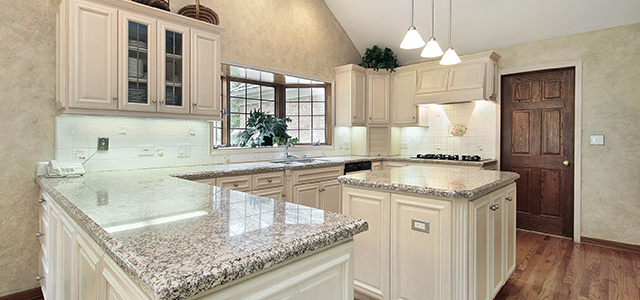Granite has been sourced from the quarry for centuries, and that sourcing process has remain unchanged for just as long. What has changed, however, is the way granite slabs are fabricated. Instead of using hand-polished and hand-operated machinery, fabricators rely on complex, precise technology to get from slab to polished counter. When you’re purchasing a granite slab for your countertop, it’s important that you use a fabricator who employs the latest technology, as the result is far improved from previous methods.
What’s wrong with doing the job by hand?
For a long time, people relied on hand-cutting and –polishing granite, as there was no other way to shape the material. However, this dying trade results in uneven counters with crooked lines and bumps in the finish. Further, when hand polishing, technicians must use wax to help bring out the brilliant finish; however, the wax fades quickly, and you’ll need to repolish the surface within a year of installation – and then keep repolishing it.
Moving up in the world
When machines came on the scene, granite fabrication took a dramatic turn. Now, with saws, polishers and routers, granite suppliers could achieve a superior cut and reduce the amount of time it took to get the job done. As a result, the cost of granite also began to decrease, making it more accessible to a wider population.
Polishing machines are able to get a superior result in the slab’s finish, polishing the surface to a level that paralleled a mirrored look. In addition, the tool allows fabricators to achieve a variety of finishes, from smooth to soft to slick, along with decorative finishes like hammered, tumbled or flamed.
Routers make the job of fabricating a granite countertop even easier. With many types of routers, the number of edge profiles from which customers could choose has increased as well.
High-tech fabrication
While the fabricating machines are typically hand operated or have some level of automation, true industry advancement has only been achieved with Computer numeric control (CNC) technology – the ability for a computer to control the saws, polishers and routers. CNC machines have resulted in a number of significant improvements for fabricators and customers:
- Decreased fabrication time. What used to take weeks or days now takes several hours in terms of cutting and polishing.
- Superior product. Making a template of the counter on the site allows fabricators to perfectly replicate the exact dimensions of the countertop on a computer assisted design (CAD) program. The CAD also programs the edge profile, location of the sink, cooktop and faucet, allowing the saws, polishers and routers to do their precise work and resulting in a precise finished product. The computer tells the fabricating machines what to do, controlling their every move and resulting in a far better product.
- Lower cost. With the efficiency and ability that CAD programs and CNC machines have brought to granite fabrication, suppliers are able to work at an increased productivity level, reducing even more the cost of natural stone counters, tiles, sinks, etc.
Why risk your granite counter fabrication to the hand-controlled process or hand-operated machines when CAD and CNC technology will produce the best result? Work with a fabricator who will achieve a final product worthy of inclusion in your kitchen, and that will last for a long time.


